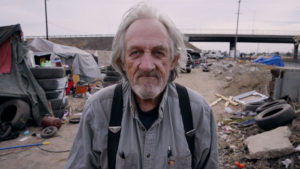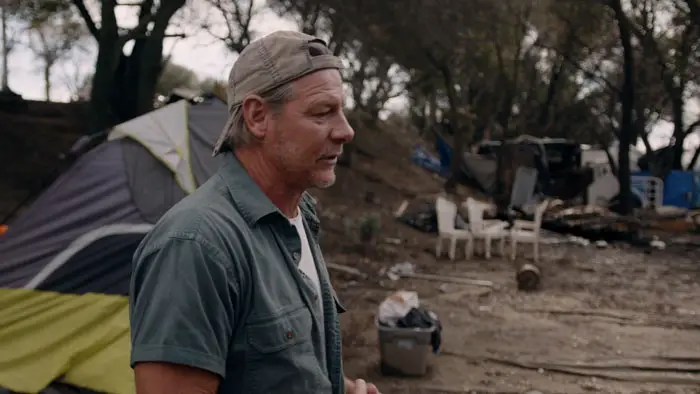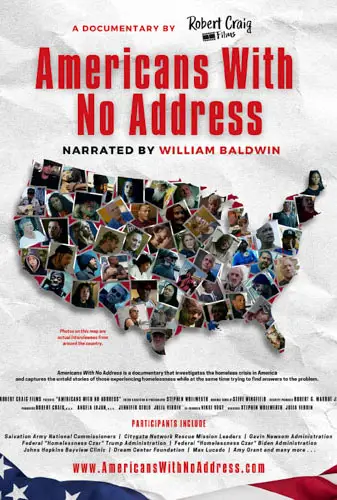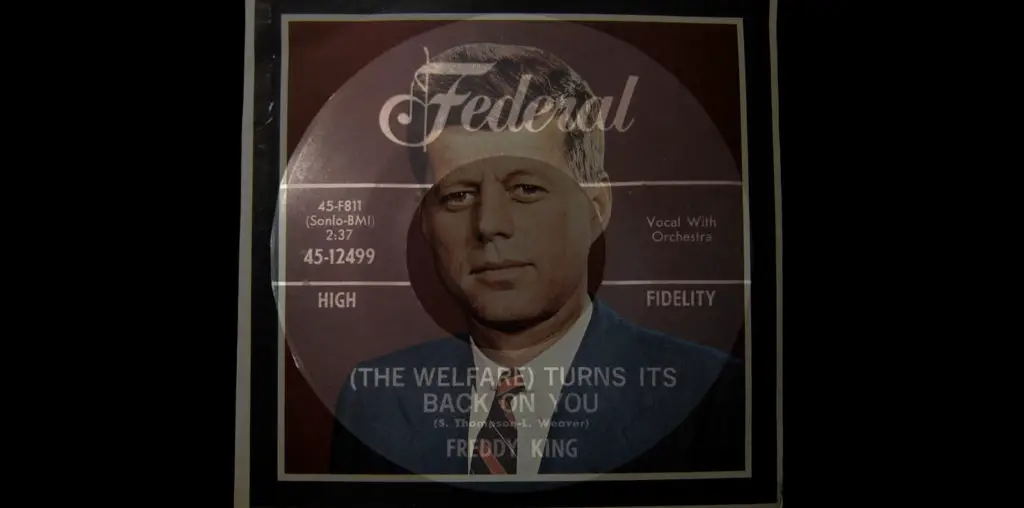
You’d have to either be blind or not live in a big city not to know that America has a severe homeless problem. It seems that the more money we throw at it, the worse the problem gets. Stephen Wollwerth and Julia Verdin’s documentary Americans With No Address explores the history of homelessness and how we got here and spotlights organizations that have real solutions.
Narrated by William Baldwin, Americans With No Address interviews 175 current and former homeless people, faith leaders, the CEO of homeless shelters, clinical specialists, and former politicians who have been on the front lines of the problem for decades.
To better understand the problem, the filmmakers chartered a bus and traveled to twenty major cities in eighteen states over the course of three weeks. The journey starts in LA, where the CEO of the Union Rescue Mission flat out states that charities across Los Angeles and California are being pushed to their absolute limits. More and more people are becoming homeless faster than these organizations can help.
The documentary goes deep into the numbers, surpassing 1.2 million homeless. While it would be easy to blame COVID, the reality is that the rate of homelessness has always been on the rise, and the pandemic merely accelerated the problem.

“…the rate of homelessness has always been on the rise, and the pandemic merely accelerated the problem.”
As far as history, there was a time when the cities and states had a “handle” on the problem, but a few bad apples spoiled the batch. Decades ago and today, many of our homeless were being treated in mental institutions. When a handful of these hospitals, the government defunded…I mean closed these facilities. We learn that the roots of homelessness are economic, mental, and emotional disorders, drugs, and the economy.
The government invariably has a role to play in the situation. They control where the funding goes. Here in California, the money goes to create “affordable” housing and, worse, safe zones for drug addicts to get clean supplies and sometimes a stipend to buy drugs from dealers on the other side of the fence.
The problem is bleak, but Americans with No Address presents potential solutions. They offer real solutions with the help of some government services, but primarily charitable and non-profit organizations. Better yet, these services are offered at mere pennies on the dollar compared to what the government is spending. One organization can help its residents with a total cost of $21 per person daily. Sadly, these organizations are often not eligible for government funds.
The key to helping someone find a new life and a place to stay is addressing the root of the problem. If it is mental or emotional, some organizations provide a temporary stable environment and a case manager to walk them through the process of finding mental health. For the addicted, the answer is rehabilitation and recovery.
For the economically depressed, it’s a bit of counseling and understanding why they got there in the first place. One homeless gentleman went blind and lost his job. The shelter found he had cataracts, gave him a free operation, and now he sees again.
Lastly, the documentary shows how often the government becomes a roadblock to answers and wastes billions of tax dollars. Cities engage in programs focusing on harm reduction. In other words, do what you must to keep the homeless alive. Offering no help is, in fact, killing them faster.
My only conclusion from watching Americans With No Address is that the problem is only getting worse, yet the answers are right in front of us. The fact that we are in a position today to fix the problem is maddening and only illuminates brightly in the documentary.
Homelessness is a problem that every American needs to understand, why it exists, and that there are solutions. Homelessness doesn’t mean helplessness. You need to see Americans With No Address…now!

"…Homelessness doesn't mean helplessness."


